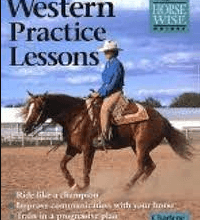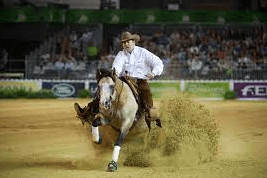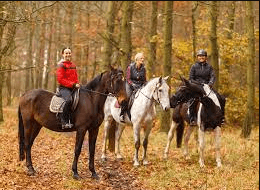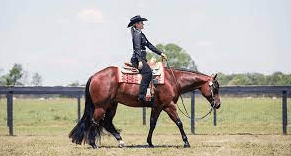What Are The Different Gaits In Western Pleasure?
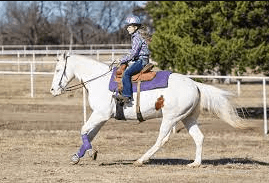
Imagine the vast expanse of the American West, with its rolling hills and open prairies stretching as far as the eye can see.
The sound of hooves hitting the ground echoes through the air, as horses move gracefully in perfect synchrony with their riders.
This is the world of western pleasure, a discipline that showcases not only the beauty of these magnificent animals but also their ability to perform different gaits.
In this article, we will explore the various gaits that are characteristic of western pleasure riding.
From the slow and steady walk to the elegant and flowing lope, each gait has its own unique qualities that contribute to the overall experience.
Through a detailed examination of these gaits, we will gain a deeper understanding of how they enhance both rider and horse’s connection and create an atmosphere of freedom on horseback.
So saddle up and join us on this journey as we delve into the captivating world of western pleasure gaits.
The Walk: The Most Basic Gait in Western Pleasure
The walk is the fundamental gait in Western Pleasure, serving as the foundation for further development and refinement of the horse’s movement.
It is a four-beat gait where each foot moves independently, creating a smooth and steady rhythm.
The walk allows the horse to cover ground at a relaxed pace, making it an ideal gait for trail riding or leisurely pleasure riding.
When performing the walk in Western Pleasure competitions, the horse should exhibit fluidity and relaxation while maintaining forward motion.
The rider’s position during the walk is crucial for achieving a balanced and harmonious ride.
They should sit deeply in the saddle with their upper body upright and aligned with their hips, maintaining light contact with the reins to guide but not restrict the horse’s movement.
By mastering proper body position and understanding the benefits of this basic gait, riders can set a solid foundation for more advanced maneuvers in Western Pleasure.
The Jog: A Slow, Two-Beat Gait
The jog is a slow, two-beat gait commonly seen in Western Pleasure competitions.
It is characterized by a relaxed and collected frame, with the horse maintaining a steady pace and rhythm.
The jog requires the horse to move with precision and balance, showcasing their athletic ability and training.
Maintaining a collected frame during the jog is crucial as it demonstrates the horse’s responsiveness to cues from the rider and enhances their overall performance in Western Pleasure events.
Description and Characteristics of the Jog
One interesting statistic regarding the Jog in Western Pleasure is that it is typically performed at a speed of about 4 to 6 miles per hour.
The Jogging technique in Western Pleasure requires the horse to have a slow, deliberate, and controlled two-beat gait.
The horse should move with a level topline, maintaining a natural head carriage and an effortless stride.
It is important for the rider to maintain light contact with the horse’s mouth and use subtle leg aids to encourage forward movement without rushing or pushing the horse too much.
Common mistakes in the jog include going too fast, losing rhythm or cadence, having an incorrect head position, or displaying tension or resistance.
To achieve a successful jog in Western Pleasure, riders must focus on balance, relaxation, and precision while allowing their horses to move freely and express their natural gaits within the desired speed range.
Importance of Maintaining a Collected Frame
Maintaining a collected frame is crucial for achieving harmony, grace, and fluidity in horseback riding. This requires the rider to have a strong core and develop balance and suppleness.
When a horse maintains a collected frame, it is able to move with elegance and precision, showcasing its athletic abilities. The importance of balance and suppleness cannot be overstated as they allow the horse to engage its hind end effectively, resulting in powerful yet controlled movements.
In order to achieve this level of collection, the rider must focus on developing their own strength and flexibility. A strong core is essential for maintaining proper posture and stability in the saddle, allowing the rider to communicate effectively with their horse through subtle cues. Additionally, developing balance and suppleness allows the rider to move in unison with their horse, creating a seamless partnership that enhances both performance and aesthetics.
By prioritizing these aspects of riding, riders can unlock the true potential of their horses while experiencing a sense of freedom and connection that only comes from mastering this art form.
The Lope and Extended Gaits: Showcasing Speed and Grace
The Lope is a key gait in Western Pleasure horse showing, known for its smooth and collected movement.
It is characterized by a three-beat rhythm, where the horse’s hind legs push off together while the front leg on the same side moves forward.
The Lope showcases the horse’s speed and grace, with an emphasis on balance and coordination.
In addition to the Lope, Western Pleasure also includes extended gaits such as the extended jog and extended lope.
These are variations of these gaits that demonstrate increased speed and length of stride while still maintaining control and precision.
Description and Characteristics of the Lope
Characterized by a smooth, rhythmic motion and a relaxed demeanor, the lope in Western pleasure is a gait that showcases the horse’s ability to maintain a consistent speed while appearing effortless. The lope is often described as the most desired and elegant gait in Western pleasure competitions.
During this gait, the horse moves with grace and finesse, exhibiting a natural forward motion that is both fluid and controlled. The lope is characterized by three distinct beats: two diagonal pairs of legs moving together followed by a momentary suspension phase where all four feet are off the ground. This creates a distinctive rocking motion that adds to the beauty of this gait.
The horse’s head is carried low and relaxed, providing an overall picture of harmony between horse and rider. In addition to its aesthetic appeal, the lope also requires strength and balance from both the horse and rider. It demands precise coordination of each footfall to maintain rhythm and cadence throughout the performance.
Overall, the lope represents not only technical skill but also showcases the innate abilities of horses to move with elegance and beauty.
Introduction to Extended Gaits in Western Pleasure
An introduction to extended gaits in Western pleasure unveils a new level of grace and fluidity, as horses seamlessly elongate their stride while maintaining perfect balance and control.
Extended gaits are a display of the horse’s athleticism and training, showcasing their ability to move with power and elegance.
In Western pleasure, extended gaits refer to lengthening the stride at the walk, jog/trot, or lope/canter while maintaining the desired rhythm and cadence.
The transitions into these extended gaits are initiated by subtle cues from the rider, such as a light squeeze of the legs or a shift in body weight.
These cues prompt the horse to reach further forward with their legs without sacrificing their frame or collection.
The horse should remain balanced throughout the extension, demonstrating suppleness and responsiveness to the rider’s aids.
Mastering these transitions and cues for extended gaits requires precision, timing, and an understanding of each individual horse’s capabilities.
It is through these extended gaits that riders can truly experience the freedom of movement that Western pleasure embodies.
Frequently Asked Questions
How can I train my horse to have a smooth and balanced walk in western pleasure?
To train a horse for a smooth and balanced walk in Western pleasure, various training techniques can be employed. Emphasizing the development of collection is crucial, as it promotes balance, impulsion, and engagement of the hindquarters, resulting in a harmonious and fluid walk.
What are some common mistakes riders make when performing the jog in western pleasure?
Common mistakes riders make when performing the jog in western pleasure include inconsistent rhythm, incorrect head position, and lack of impulsion. To improve, riders should focus on maintaining a steady pace, keeping the horse’s head level with the withers, and encouraging forward energy.
Are there any specific cues or aids that riders use to transition from the jog to the lope in western pleasure?
Transition cues in western pleasure from jog to lope involve clear, subtle aids such as weight shifts, leg pressure and rein cues. Maintaining rhythm is critical during this transition to ensure a smooth and balanced gait change.
Can you explain the difference between the lope and extended gaits in western pleasure?
The lope in western pleasure is a smooth, three-beat gait that is slower than the extended gaits. Achieving a smooth transition from jog to lope requires proper body positioning, subtle rein cues, and maintaining a balanced seat.
Are certain breeds or conformation traits more suited for excelling in western pleasure gaits?
Certain breeds, like Quarter Horses and Paints, are often well-suited for excelling in Western Pleasure due to their build and conformation traits. These traits include low hocks, deep chests, and strong hindquarters that facilitate the desired gaits in this discipline.
Conclusion
In conclusion, understanding the different gaits in Western Pleasure is essential for riders and enthusiasts alike. By mastering these gaits, riders can showcase the grace and skill of their horses while also ensuring a comfortable and enjoyable ride.
One example that highlights the importance of gait mastery is the case study of a rider named Emily. Emily had been competing in Western Pleasure shows for several years but was struggling to consistently place well. After seeking guidance from an experienced trainer, she focused on refining her horse’s jog gait. Through dedicated practice and attention to detail, Emily was able to improve her horse’s rhythm and balance in the jog, resulting in smoother transitions and overall better performance in shows. This case study demonstrates how honing one specific gait can make a significant difference in competitive success.
In conclusion, becoming proficient in the different gaits of Western Pleasure requires dedication, patience, and attention to detail. Riders must strive for rhythmic movements that showcase their horse’s ability and athleticism while also ensuring a comfortable ride for both horse and rider. Whether it is perfecting the walk or showcasing speed and grace through extended gaits, mastering each gait is crucial for success in Western Pleasure competitions.
